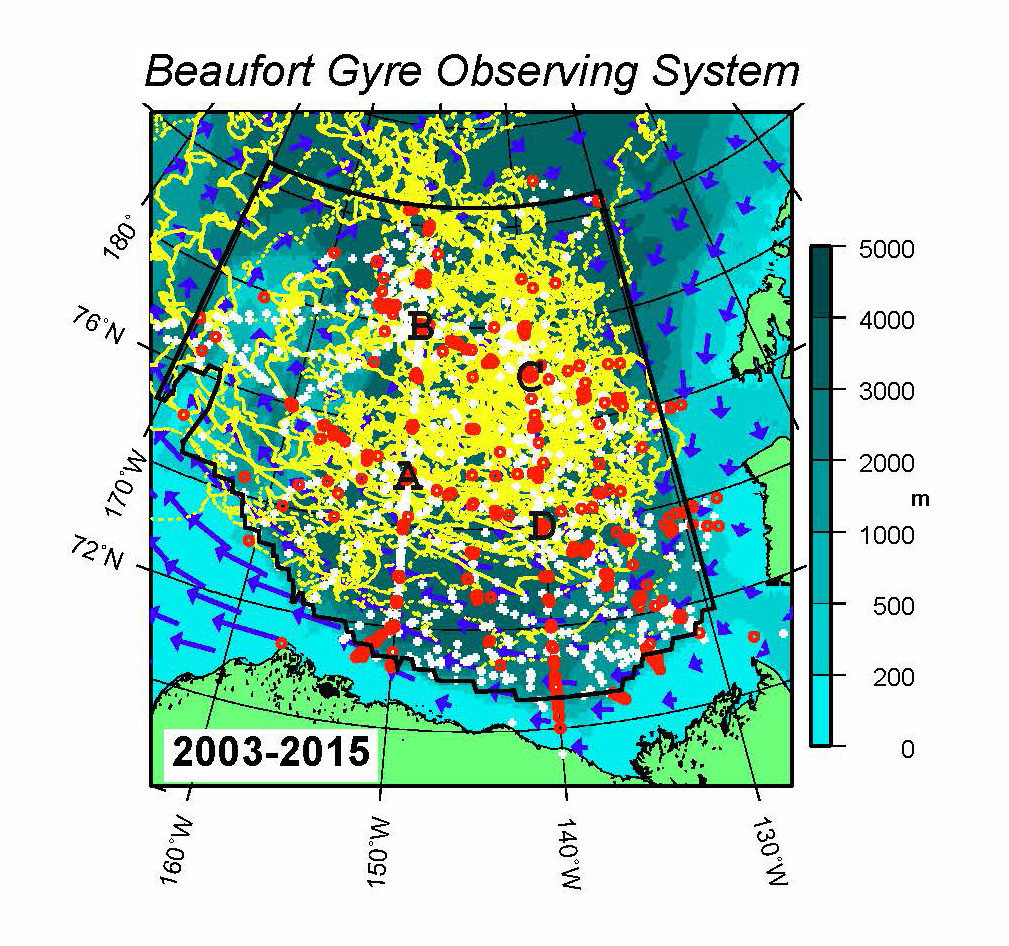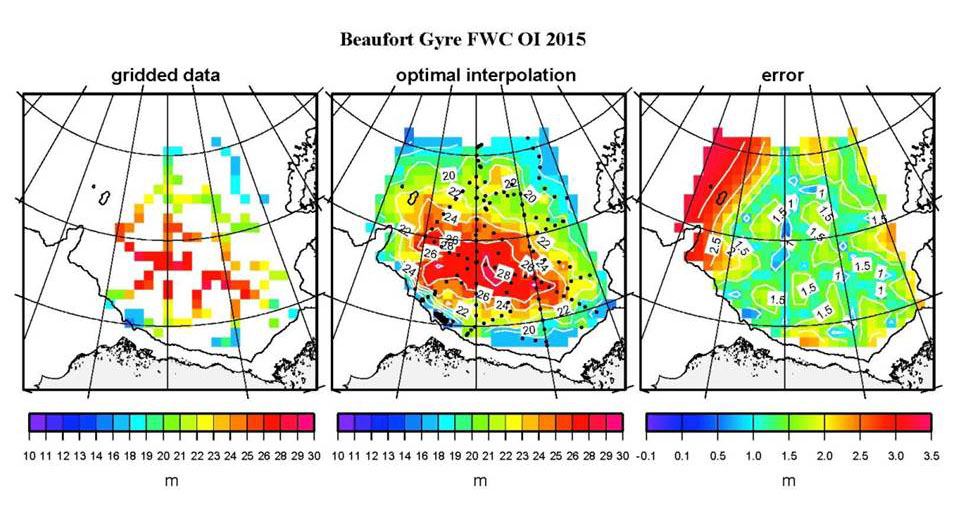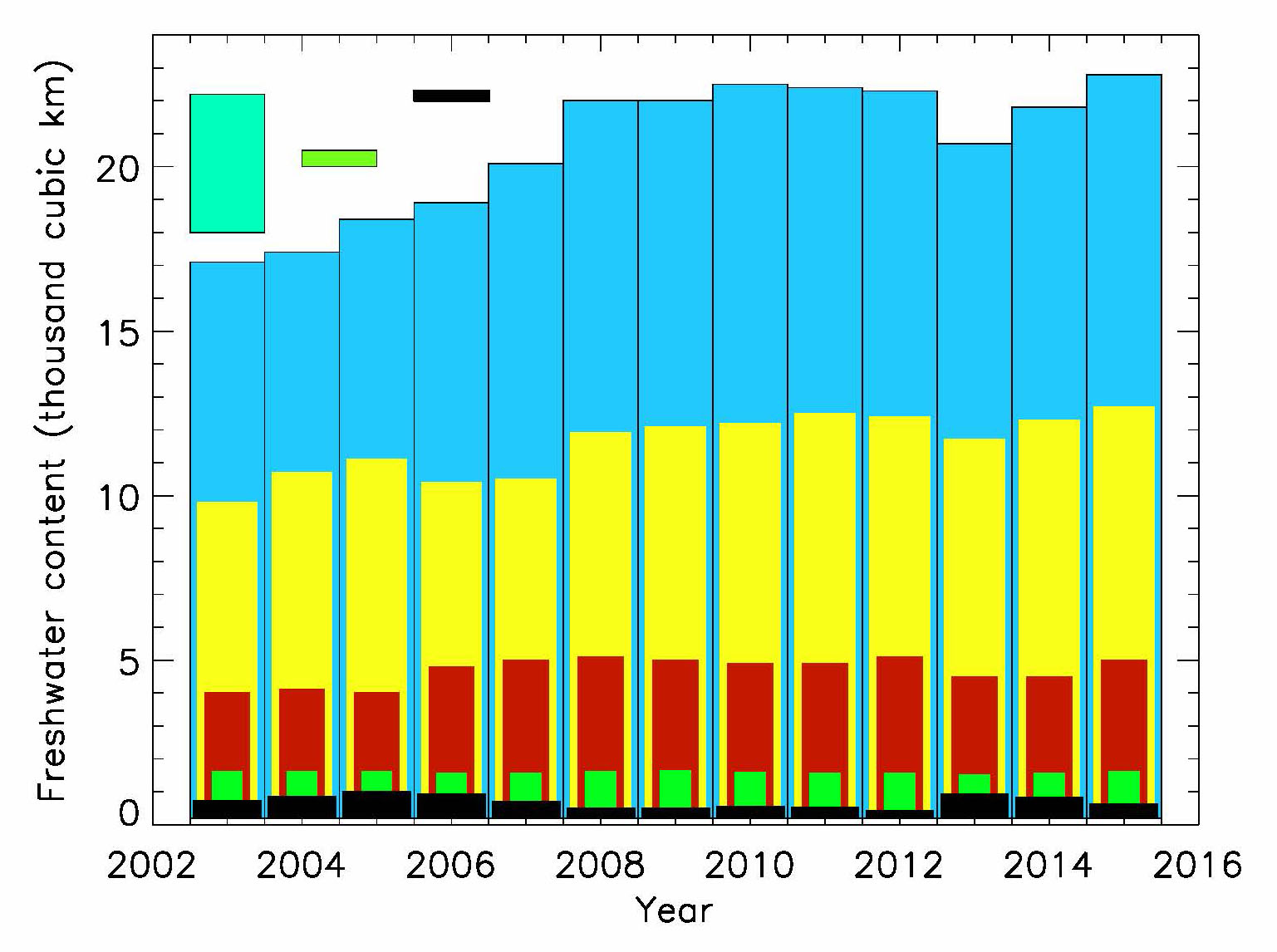BG Freshwater Content (FWC) reaches absolute maximum in 2015
Beaufort Gyre Observations
Knowledge of environmental changes in the Beaufort Gyre (BG) region of the Arctic Ocean and their consequences advances our understanding of mechanisms and the historical variability of the Arctic climate and makes possible predictions of future climate change scenarios. By 2015, thirteen years of observations, supported by the national Science Foundation, Woods Hole Oceanographic Institution and the Department of Fisheries and Oceans, Canada, have been obtained in the BG region. Hydrographic surveys of the BG region, year-round mooring observations and data from Ice-Tethered profilers are used to analyze the freshwater content, driving forces, sources and sinks of fresh water in the region (Figure 1).
Interannual variability
The liquid freshwater content in summer increased 5410 km3 from 2003 to 2010, decreased a bit in 2011-2014, but in 2015 reached its absolute maximum of 22,600 km3 or 5600 km3 over climatology (Figure 2 and 3).


